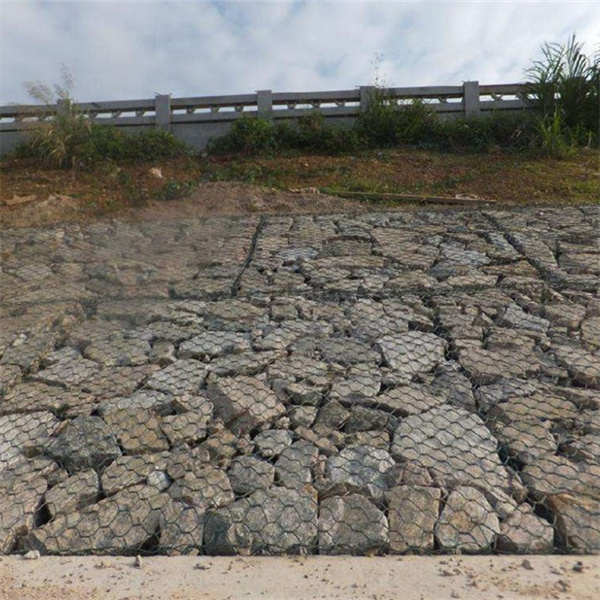Nov . 24, 2024 13:25 Back to list
Optimal Design Techniques for Durable Gabion Structures
The Best Gabion Structure A Sustainable Solution for Erosion Control and Aesthetics
Gabion structures, often composed of wire mesh cages filled with rocks, stones, or other materials, have become increasingly popular in construction and landscaping due to their versatility and aesthetic appeal. These structures serve both functional and environmental purposes, making them one of the best choices for erosion control and drainage management. This article explores the benefits, applications, and design considerations of gabion structures.
What Are Gabions?
Gabions are essentially large cages or baskets made from steel wire mesh, traditionally filled with natural stone. Their design allows for flexibility and adaptability, making them ideal for various applications. The term gabion is derived from the Italian word gabbione, meaning big cage. These versatile structures can vary in size and shape, accommodating different types of filling materials from river stones to recycled concrete.
Benefits of Gabion Structures
1. Erosion Control One of the primary uses of gabion structures is to prevent soil erosion along riverbanks, roads, and slopes. Their mass and porous nature allow water to flow through, reducing hydraulic pressure while stabilizing the surrounding soil. The rocks within the cages also help filter water, minimizing sediment displacement.
2. Cost-Effectiveness Gabion walls can be a more economical option compared to traditional retaining walls or concrete barriers. The materials required for their construction are often locally sourced, which can reduce transportation costs. Additionally, gabions tend to have lower installation costs due to their simplicity and ease of handling.
3. Environmental Sustainability Gabions are eco-friendly alternatives in construction. They can utilize local stone, minimizing the carbon footprint associated with material transport. Moreover, the spaces within the cages can support vegetation growth, encouraging habitats for local wildlife and contributing to biodiversity.
4. Aesthetic Appeal Beyond their structural benefits, gabion walls can enhance the visual appeal of a landscape. With various filling materials available, from smooth river stones to broken bricks, designers can create attractive structures that blend seamlessly with their surroundings. This adaptability makes gabions suitable for urban environments as well as rural settings.
Applications of Gabion Structures
Gabion structures are employed in numerous applications, including
best gabion structure

- Retaining Walls Used to hold back soil and prevent landslides, gabion retaining walls are particularly effective on steep slopes. - Riverbank Stabilization Gabions protect riverbanks from erosion caused by water flow. They can be strategically placed along banks to safeguard against flooding and sediment loss.
- Landscaping Features Architects and landscape designers incorporate gabions as decorative elements, utilizing them for seating, flower beds, or as accents in modern garden designs.
- Noise Barriers In urban areas, gabion walls can function as sound barriers, reducing noise pollution from nearby roads or railways
.Design Considerations
When designing a gabion structure, several factors must be taken into account
1. Material Selection The type of stones or materials used will affect the structure's stability and appearance. Local materials are often preferred for both ecological and economic reasons.
2. Sizing and Placement The size of gabions should be proportional to the area they will serve. Engineers must also consider the location and surrounding environment when determining placement to ensure effectiveness.
3. Maintenance While gabion structures are generally low maintenance, periodic inspections are necessary to ensure the integrity of the wire mesh and fill materials.
4. Regulatory Compliance Local regulations regarding construction and environmental impacts should be followed to avoid legal challenges.
Conclusion
Gabion structures offer an impressive combination of durability, cost-effectiveness, and aesthetic versatility. Their ability to combat erosion while enhancing the landscape makes them an ideal choice for various applications—from functional retaining walls to beautiful gardens. As we continue to navigate the challenges of environmental sustainability, incorporating gabions into our designs represents a practical step toward promoting eco-friendly construction practices. Whether in urban settings or rural landscapes, gabions stand as a testament to innovative engineering that prioritizes both function and beauty.
-
Why PVC Coated Gabion Mattress Is the Best Solution for Long-Term Erosion Control
NewsMay.23,2025
-
Gabion Wire Mesh: The Reinforced Solution for Modern Construction and Landscape Design
NewsMay.23,2025
-
Gabion Wall: The Flexible, Seismic-Resistant Solution for Modern Landscaping and Construction
NewsMay.23,2025
-
Gabion Wall Solutions: The Durable, Decorative, and Affordable Choice for Every Landscape
NewsMay.23,2025
-
Gabion Basket: The Durable and Flexible Alternative to Traditional Retaining Walls
NewsMay.23,2025
-
Gabion Basket: The Proven Solution for Slope Stability and Flood Control
NewsMay.23,2025
-
Versatility of Chain Link Fence Gabion
NewsMay.13,2025






